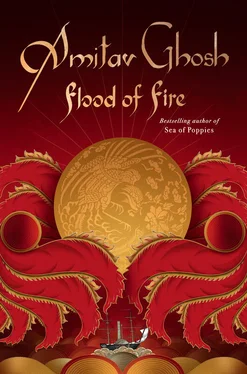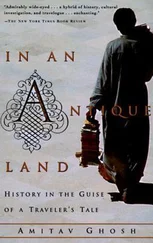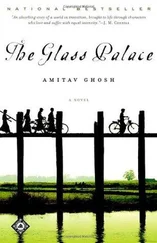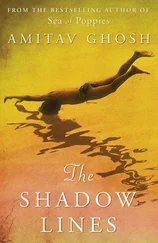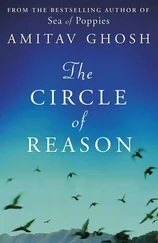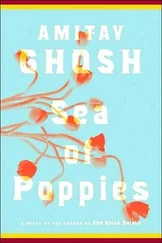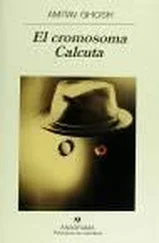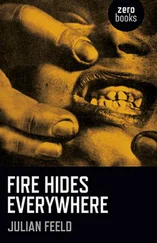There would be an early reveille and the sepoys were to be ready to embark by 7 a.m. the next day, said the captain. This time they would deploy in full marching order, with drummers, fifers, gun-lascars, runners, golondauzes, bhistis and, of course, medical attendants; their baggage was to be packed accordingly.
‘Better get to it, jaldee havildar.’
Ji, Kaptán-sah’b.
*
It took only a few minutes for the whole camp to learn that B Company was to go into action the next day, with a full complement of supporters.
In the fifers’ tent the weather was quickly forgotten as the boys got down to checking their equipment and taking inventory of the contents of their knapsacks. This would be Raju’s first deployment and he was careful to follow Dicky’s lead in making his preparations, down to details like stuffing a few sugary sweets into his pockets: ‘You’ll see, men — when the fighting starts it helps to have something sweet in your mouth. Adds to the fun.’
Having experienced battle before, Dicky was full of bravado — yet Raju could sense a change in his mood. That night, huddled together under their shared blankets, Dicky was very restless, thrashing about and moaning in his sleep. He woke not just Raju but several others as well, earning himself volleys of curses, fisticuffs and kicks.
‘Shut your gob, bugger, and let us sleep — there’s fighting ahead tomorrow. You can cry all you like then.’
The next day Kesri was up long before dawn. Accompanied by two lance-naiks he went from tent to tent, lantern in hand, carrying out random inspections to make sure that the sepoys had packed their knapsacks exactly as required by Heavy Marching Orders: with a spare uniform, including a second koortee and another pair of shoes; a durree to sleep on and a ‘cumbly’ blanket, the last being neatly rolled up and strapped under the brass lota that sat atop every knapsack.
The fifers and drummers also rose early and they were among the first to take up stations on the beach, to provide accompaniment for the sepoys as they paraded. It was a cold morning and a thick mist had risen off the surface of the water, dimming the glow of the sun.
The tide crested just before the Enterprize arrived. Because the water was high, the unit was spared the bother of using lighters for the embarkation: the steamer was able to nudge her bows so close to the shore that a gangplank was all that was required to go on board.
The followers went first and while they were boarding the ‘bell of arms’ was rung to summon the sepoys to roll-call: it turned out that so many were in hospital that the company was at three-quarters its usual strength.
After roll-call the sepoys fell in line in front of the gangplank, their tall, black topees receding into the mist. Then, with drums beating and fifes trilling, they went marching up to the steamer, their Brown Besses slung over their shoulders. After the sepoys came the banjee-boys, and then the officers, in ascending order of seniority. Captain Mee was the last to board, and the steamer’s paddle-wheels began to churn even as the gangplank was being pulled in after him. With water foaming around the hull, the vessel turned her head slowly northwards.
The fifers and drummers were seated between the bows. As the steamer built up speed they were hit head-on by the wind. They huddled together, teeth chattering, and Raju buried his face between his knees; he was sleepy enough to fall into a doze. When he looked up again he found, to his surprise, that the mist had lifted and the skies had cleared. The steamer was cruising through a miles-wide wedge of water, a deep, iridescent blue in colour. Looming on either side were ranges of serene grey-green mountains.
Dead ahead lay the twin hills of Chuenpee: the larger of the two was crowned by an impressive set of ramparts and towers, with hundreds of colourful pennants and banners fluttering on the battlements: some were long strips of cloth, with ideograms imprinted on a crimson background; some were shaped like doubled flames, with green and yellow edges; some were immense streamers on which dragons undulated as if in flight.
As they came closer they saw that the battlements were bristling with guns and gun-ports. Only one part of the island lay beyond the reach of the hilltop battery: this was the section that was sheltered by the second hill. There lay the landing-point.
The waters around the landing-point were thronged with vessels of many sorts. Three steamers, Madagascar, Queen and Nemesis had pushed close in to shore and were discharging their detachments directly on to the beach. The larger warships were at anchor in deeper water: these consisted of two frigates — the forty-four-gun Druid and the twenty-eight-gun Calliope — and four smaller warships. Their contingents were in the process of being ferried ashore in cutters and longboats.
Such was the congestion that the Enterprize had to hold back for a bit. As a result Raju was able to observe the debarkation as though it were an exercise staged specially for his benefit. The spectacle was mesmerizing: the complex manoeuvres were carried out with clockwork precision, soldiers and sailors working in synchronized co-ordination as one cutter after another pulled up to the beach to offload its men and munitions.
By the time B Company reached the shore the landing of troops was almost complete: there were around fourteen hundred soldiers assembled on the beach, along with a couple of hundred camp-followers and auxiliaries, almost all of whom were Indians. Of the fighting men about half were sepoys: six hundred and seven from the 37th Madras and seventy-six from B Company. Amongst the British troops the largest contingent was a five-hundred-strong battalion of Royal Marines; the rest consisted of artillerymen and a detachment of convalescents who had been evacuated from Chusan.
In command was an officer of the Royal Irish, Major Pratt. At his orders the heavy artillery led the way, with teams of gun-lascars dragging two six-pounders and one massive twenty-four-pound howitzer up the road that led to the top of the island’s second hill. After them came the marines and then the Madras sepoys. The Bengal detachment brought up the rear. The fifers and drummers were grouped together at the centre of the column, flanked by sepoys on either side.
As they marched up the hill clouds of dust rose from the sepoys’ stamping feet, blowing straight into the fifers’ faces. Raju was flustered at first and missed several notes, but only Dicky seemed to notice. He flashed Raju a nod and a wink which did much to settle his nerves.
Soon, absorbed in the effort of keeping his fingers and feet moving in correct time, the flutters in Raju’s stomach abated and he fixed his eyes on the back of the fifer in front, making sure that he was neither too far nor too close. So absorbed was he that he did not hear the sound of cannon-fire in the distance; it was Dicky who alerted him to it by jogging his elbow.
Kesri was at the head of the Bengal detachment with Captain Mee. Just as they reached the top of the ridge the guns on the opposite hill opened up. But the shells fell well short and they had no reason to seek shelter. Kesri was able to take careful stock of the island’s defences and he saw at once that its newly built fortifications were vulnerable on many counts: although the ramparts were tall and solid, they were constructed in an old-fashioned way. They ran straight, like curtain walls: there were no projections to create interlocking fields of fire; nor were there any angles or buttresses to provide additional stability. The breastworks that ran along the walls were also of an antique variety, known to sepoys as bãs-ke-zanjeer — ‘bamboo chains’. They were made of sharpened staves, nailed together to form a continuous barrier: the officers called them ‘Frisian horses’.
Читать дальше
